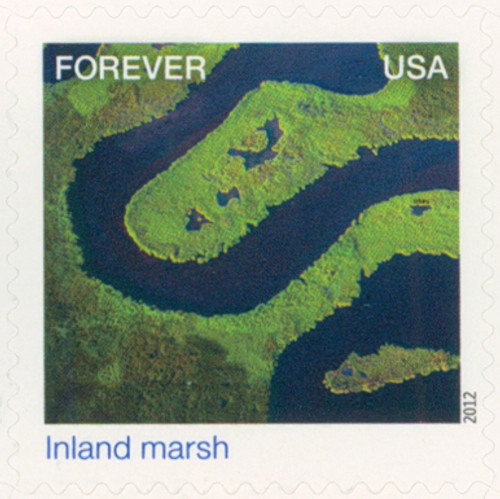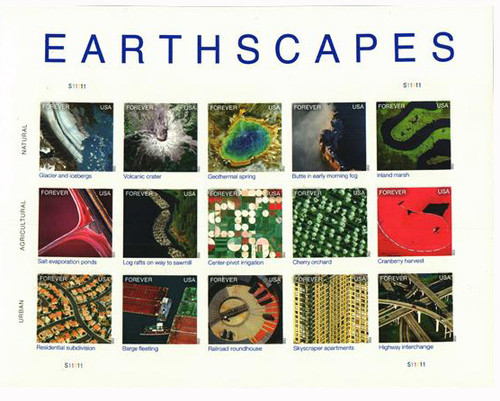
2012 First-Class Forever Stamp,Earthscapes: Inland Marsh
# 4710e - 2012 First-Class Forever Stamp - Earthscapes: Inland Marsh
$2.25 - $3.75
U.S. #4710e
2012 45¢ Inland Marsh
Earthscapes
2012 45¢ Inland Marsh
Earthscapes
Issue Date: October 1, 2012
City: Washington, DC
City: Washington, DC
Quantity: 2,670,000
Printed By: Banknote Corporation of America, Sennett Security Products
Printing Method: Offset
Perforations: Die Cut 10 ¾
Color: multicolored
On the southeastern tip of the United States, a wide, meandering river moves slowly through America’s largest freshwater marsh, the Florida Everglades. It can take two years for water from the Kissimmee River to reach Florida Bay. The importance of this vast ecosystem was not understood in the past, and efforts to drain and reroute the water had devastating consequences.
Before the 20th century, marshes and prairies covered 4,000 square miles of Florida. As the 60- mile-wide river made its way to the bay, it traveled through sawgrass marshes, wet prairies, and channels of water. Developers and farmers changed the landscape of the area by draining the swamps and redirecting the water to the growing cities. The rich soil proved ideal for growing sugar cane. Within about a 50-year period, half of the Everglades had disappeared.
Marjory Stoneman Douglas authored The Everglades: River of Grass, in 1947. The book made the public aware of the vital role the inland marsh played in the health of the state. Now decades later, efforts are being made to reverse some of the damage done to this important natural resource.
With man’s help, the Everglades may one day become the life-giving area it once was.
U.S. #4710e
2012 45¢ Inland Marsh
Earthscapes
2012 45¢ Inland Marsh
Earthscapes
Issue Date: October 1, 2012
City: Washington, DC
City: Washington, DC
Quantity: 2,670,000
Printed By: Banknote Corporation of America, Sennett Security Products
Printing Method: Offset
Perforations: Die Cut 10 ¾
Color: multicolored
On the southeastern tip of the United States, a wide, meandering river moves slowly through America’s largest freshwater marsh, the Florida Everglades. It can take two years for water from the Kissimmee River to reach Florida Bay. The importance of this vast ecosystem was not understood in the past, and efforts to drain and reroute the water had devastating consequences.
Before the 20th century, marshes and prairies covered 4,000 square miles of Florida. As the 60- mile-wide river made its way to the bay, it traveled through sawgrass marshes, wet prairies, and channels of water. Developers and farmers changed the landscape of the area by draining the swamps and redirecting the water to the growing cities. The rich soil proved ideal for growing sugar cane. Within about a 50-year period, half of the Everglades had disappeared.
Marjory Stoneman Douglas authored The Everglades: River of Grass, in 1947. The book made the public aware of the vital role the inland marsh played in the health of the state. Now decades later, efforts are being made to reverse some of the damage done to this important natural resource.
With man’s help, the Everglades may one day become the life-giving area it once was.









